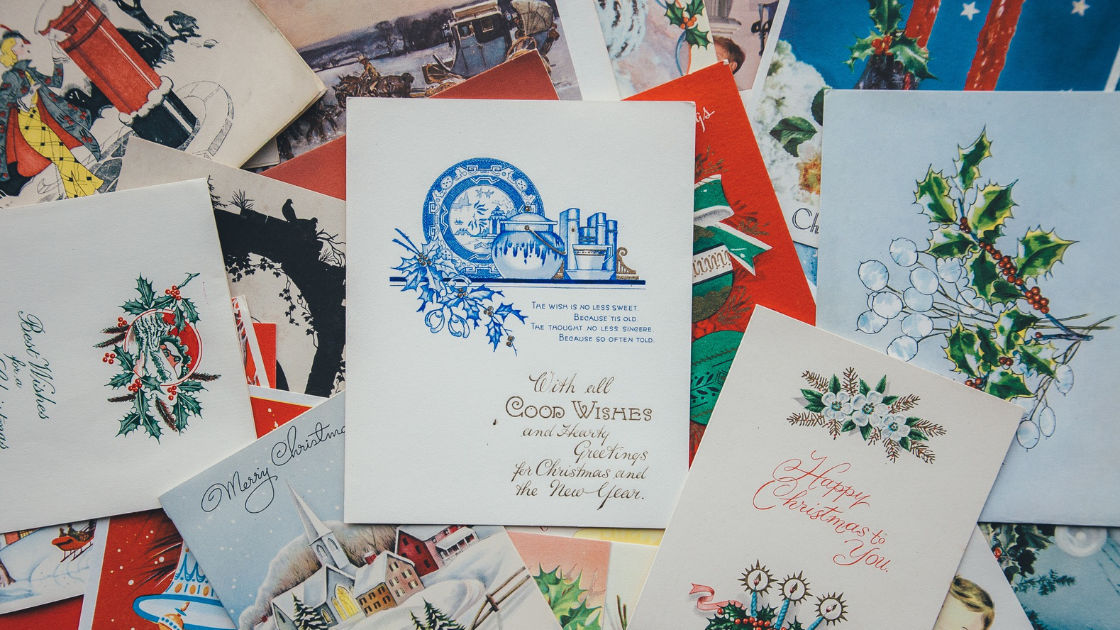For many people, myself included, December marks Christmas Card season when our post boxes contain little envelopes with updates from friends and family rather than bills and junk mail. Like many of our modern Christmas traditions, Christmas cards can be traced back to the mid-1800s.
With most historical events or occurrences, historians and archaeologists can only give an estimate or a window of time when something took place. Yet with Christmas cards, we have an exact year and even the people who came up with the first card. (Though I do imagine there is some nameless person who sent a Christmas greeting with some artwork.) In 1843, Henry Cole commissioned artist J. C. Horsley to produce the first Christmas Card. Cole had revolutionized the postal system in England; thus, perhaps, these first cards (more akin to post cards) were either a great marketing strategy for his mailing system or just a time-saving factor on Cole’s part. The first card was a three part picture with a family feasting in the middle and performing charitable acts on either side.
While it took a little while to catch on, Christmas cards became very popular during the late 1870s. Christmas cards were often produced by many small companies and newspapers often had fun reviewing them and proclaiming which had the nicest illustrations or sentiments.
Today, many of us would not necessarily agree with our Victorian counterparts. Many cards produced during this time period featured anthropomorphic animals, cherub faces poking out of flowers, dead animals, and the like. While these images and greetings seem odd to us today, they were meaningful to their intended audience. Christopher Davis in his blog Vaults of Thought, delves into the symbolism behind two noteworthy cards picturing a dead wren and another with a dying frog as his opponent flees the scene. Some cards, such as the dead wren, hearken back to older traditions such as the Hunting of the Wren. Young boys and men in Ireland would capture a wren and then beg from door to door asking for food or money for the “wren” (aka the boys). Heather Dale, a folk singer who tells tales of older traditions, has a little song about it. Victorian culture was also obsessed with death. There were rules regarding proper mourning patterns that could impact a family’s lives for years after their relative was deceased. I think some of that culture found its way into every aspect of their lives, even Christmas cards.
Allison Meier has an article here with lots of images of those traditional cards. Not all of them look very much like Christmas cards as they picture everything from owls on bicycles to cats with parasols. I personally was surprised with the cards containing sea shells. I suspect they could almost be holiday advertisements, sort of a “Merry Christmas from a great place to holiday.”
Christmas cards saw a revolution in 1915 when the book style cards were printed by the company that became Hallmark. Their cards contained an image on the front, a greeting, it was folded once, and inserted into an envelope. This soon outpaced the postcard style cards and are now standard. Many people liked the book style cards because they could write more but not a whole letter. Nowadays, Christmas cards can be pop up cards, light up, play music, and even record personalized greetings. Imagine Cole and Horsley’s surprise if they saw how far their little cards have gone.
The Quiet Valley Blog is written by Kat Muller during her first year at Quiet Valley as she learns about the farm, life in the 1800s, and the animals.
